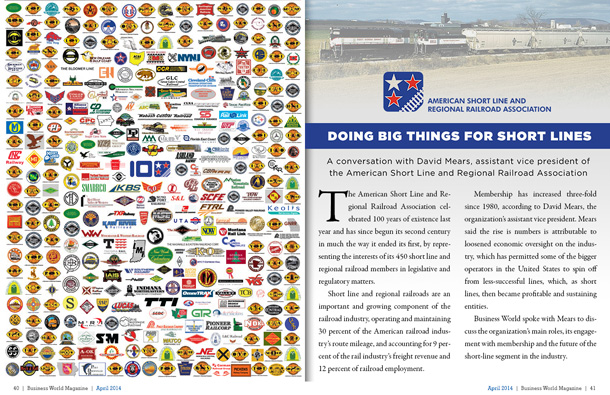
Coursing with Capability

When contemplating golf, many may conjure notions about a particular player or tournament, if not some great excuse for taking off early from work. What may not be immediately considered is the measure to which golf has impacted economies as well as human lives through the creation of an industry; an industry that has spurred the creation of jobs, innovations in engineering and environmental practices, and more philanthropic benevolence than all other sports combined. As a game, as Tom Watson once said, “No other combines the wonder of nature with the discipline of sport in such carefully planned ways.†In the realm of golf, one organization has added to the vitality of the industry through careful planning which combines the wonder of nature with the discipline of responsible course design and construction.
The Golf Course Builders Association of America is a nonprofit trade association comprised by the world’s foremost golf course builders as well as leading suppliers to the golf course construction industry. When it was founded more than forty years ago, it was the only organization in the world organized by and for golf course builders, and today, it remains the only organization that represents the interests of the golf course construction industry, but to be sure, the impact this industry has made should interest all. As GCBAA Executive Director Justin Apel says, “The actual value of golf may be impossible to fully calculate. There’s no telling how many business deals have been secured by virtue of a handshake on the course of through a lost putt … but what we can report, based on a 2011 economic impact study of the industry in the United States, if you combine the total employment, as well as food and beverage operations, the annual economic impact is just shy of seventy billion dollars.†That value, adds Apel, puts golf ahead of the spectator sports and performing arts industries combined. However, Apel says there are yet other “more impressive†values to be realized with respect to the extent of charitable giving generated from golf. “When considering how much money is contributed to charities through the playing of golf tournaments, not taking into account all that players individually donate, but just through tournaments alone, it equates to more than four billion dollars … no other sport comes close to touching that generosity,†says Apel.
Apel says that philanthropic distinction is a byproduct of the distinct nature of the sport, its players and its fans. “Golf is the only sport to adhere to a universal set of rules and ethics. You have to track your own score and call your own foul. It is the only sport that does that, and in turn, it attracts honest, disciplined and ethical people. Golfers have a commonality; there is athleticism, skills and talent, but there are also values of honesty and integrity, they’re good at heart and willing to contribute … there’s simply a different kind of audience when it comes to golf, for those who play it and those who watch it.â€
And to Apel’s point, the same virtues are inherent in GCBAA membership. From its inception, the GCBAA introduced programs to give back to communities, establishing a foundation which stewarded initiatives such as “Sticks for Kids†– a program that provides youth with a positive and enriching golf experience through instruction on golf rules, etiquette, safety and environmental awareness. In 2006, the GCBAA formed a partnership with the National Recreation and Park Association (NRPA) to market the program to its 6000 member municipalities. That same year, the Foundation’s Scholarship Program was restructured to create relationships with national Universities whose students are the future leaders of the golf industry. The Program awarded its first recipients with $1,000 scholarships and complimentary two year memberships to the GCBAA. Yet, the foundation has supported a variety of other programs that benefit society and the golf industry. The association’s greatest impact may be evidenced in its advancing of sustainability practices which are the hallmark of professional golf course design and construction.
Environmental Stewardship
The GCBAA is dedicated to advancing and continuously improving the profession of golf course construction while serving the interests of its member companies. Sustainability, eco-sensitivity, management of natural resources; Apel says these have been at the forefront of considerations by professional golf course builders long before “green†became such a buzzword in industry. “If people only realized how good these builders are at preserving environments and conserving resources such as water, the industry wouldn’t get some of the criticism it has gotten, but that comes from people who just don’t understand. From the architects who draft designs, to the builders who construct the course, to those who oversee ongoing maintenance, the approach has always been about working with natural surroundings, native vegetation and conservation of resources … sustainability is nothing new to the golf industry because it has always been a chief component of professionals,†affirms Apel.
Such practices have been outlined through another program co-sponsored by the GCBAA Foundation, an initiative in partnership with the American Society of Golf Course Architects and funding to publish An Environmental Approach to Golf Course Development. The book’s case studies evaluate the relationship between golf course design, construction, and management and the involved environmental considerations.
The awareness and adherence to best environmental practices is just one reason why potential developers want to be sure they’re contracting services from a GCBAA member, but another important reason is expertise. As Apel says, “Not just anyone who owns equipment can just go out and build a golf course … this is highly-skilled, specialty trade that involves core principles … anybody can learn it, but it takes special understanding of soil, topography, turf and a lot more to develop a unified and consistent golf course, that is both playable and environmentally sustainable over its planned lifetime.â€
Membership has its perks
The GCBAA traditionally recognizes the best builders, architects and innovators of the golf industry through its award programs which include its prestigious Don A. Rossi Award. Next February at the Golf Industry Show in Orlando, Florida, world renowned golf course architect Rees Jones will be recognized with the 2014 Don A. Rossi Award which honored the totality of renovations and redesigns he has overseen of U.S. Open Championship courses.
GCBAA members additionally benefit from access to a plethora of programs and services to construction contractors and specialists which impart insight into the ever-changing regulations and technologies associated with golf course construction. Members also uniquely benefit from access to professional golf tournaments, for example the USGA offers members complimentary admission to all USGA Championships and the PGA similarly allows members (and their spouse) complimentary admission to the PGA Championship, the Senior PGA Championship and all PGA Tour events.
Despite experiencing some impact at the height of the recession, the future for the golf industry appears prosperous. Apel notes that the National Golf Foundation reports over 900 development projects currently underway in more than 125 countries throughout the world. He anticipates that interest in golf as well as demand for new courses will increase given the sport’s inclusion in the upcoming Olympics. As Apel says, “It’s an exciting time for the industry and the teams of professionals that make this one of the world’s greatest industries.â€
To learn more about the programs, services and details of how to join the Golf Course Builders Association of America, visit the website at www.gcbaa.org.








